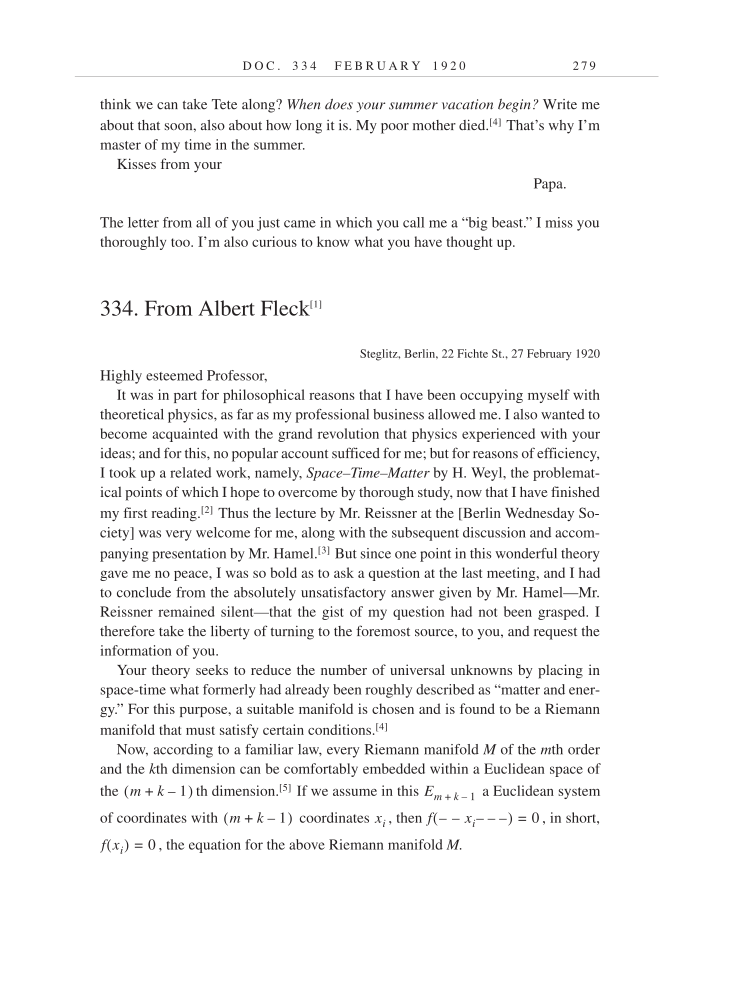D O C . 3 3 4 F E B R U A R Y 1 9 2 0 2 7 9 think we can take Tete along? When does your summer vacation begin? Write me about that soon, also about how long it is. My poor mother died.[4] That’s why I’m master of my time in the summer. Kisses from your Papa. The letter from all of you just came in which you call me a “big beast.” I miss you thoroughly too. I’m also curious to know what you have thought up. 334. From Albert Fleck[1] Steglitz, Berlin, 22 Fichte St., 27 February 1920 Highly esteemed Professor, It was in part for philosophical reasons that I have been occupying myself with theoretical physics, as far as my professional business allowed me. I also wanted to become acquainted with the grand revolution that physics experienced with your ideas and for this, no popular account sufficed for me but for reasons of efficiency, I took up a related work, namely, Space–Time–Matter by H. Weyl, the problemat- ical points of which I hope to overcome by thorough study, now that I have finished my first reading.[2] Thus the lecture by Mr. Reissner at the [Berlin Wednesday So- ciety] was very welcome for me, along with the subsequent discussion and accom- panying presentation by Mr. Hamel.[3] But since one point in this wonderful theory gave me no peace, I was so bold as to ask a question at the last meeting, and I had to conclude from the absolutely unsatisfactory answer given by Mr. Hamel—Mr. Reissner remained silent—that the gist of my question had not been grasped. I therefore take the liberty of turning to the foremost source, to you, and request the information of you. Your theory seeks to reduce the number of universal unknowns by placing in space-time what formerly had already been roughly described as “matter and ener- gy.” For this purpose, a suitable manifold is chosen and is found to be a Riemann manifold that must satisfy certain conditions.[4] Now, according to a familiar law, every Riemann manifold M of the mth order and the kth dimension can be comfortably embedded within a Euclidean space of the th dimension.[5] If we assume in this a Euclidean system of coordinates with coordinates , then , in short, , the equation for the above Riemann manifold M. m k 1–+ ( ) Em 1–+k m k 1–+ ( ) xi f xi– – ––– ( ) 0= f(xi) 0=
